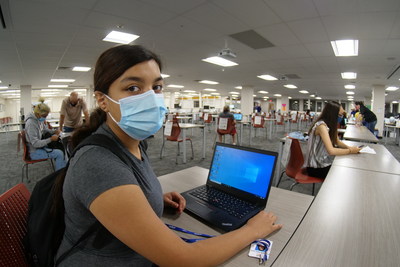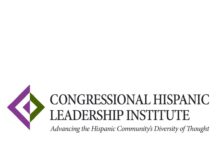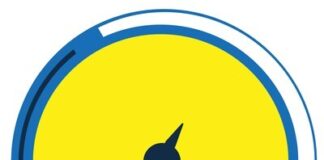LOS ANGELES, Aug. 26, 2020 /PRNewswire-HISPANIC PR WIRE/ — While legislation is being considered to aid public schools in dealing with the remote learning crisis, opponents of school choice have added clauses that reduce or eliminate funding to nonclassroom-based charters like Learn4Life. Instead of handicapping a successful method of teaching and engaging students in times of crisis, decision-makers should highlight and adapt traditional public schools to a proven flexible model as they transfer students in and out of on-site learning.

Learn4Life, a network of nonprofit charter schools that serves at-risk students who have struggled in traditional high school and have dropped out or are so far behind, they won’t be able to graduate with their class. These schools offer a personalized learning model that has allowed them to easily adapt to remote learning.
“Once we got laptops and hotspots into the hands of our students in the first week, we resumed one-on-one teaching to keep our students engaged and motivated,” explained Dr. Caprice Young, national superintendent. “Educators need to shift their focus to personalized, high-intensity learning. They need to replace day-long, large-group video instruction with fewer hours each week of individual, one-on-one or small-group instruction.”
Young points out that too many teens are bored and struggling with remote learning. Teachers are video lecturing to kids who are likely reading at different grade levels, with varying attention spans, special needs or English language challenges. Educators must identify strategies that will dramatically increase the effectiveness of remote learning during the pandemic. The traditional high school model, of five or six courses with 25-40 students in each class doesn’t work online.
Learn4Life serves more than 49,000 students, helping them get a diploma, job training and life skills – all for free. Most are minorities, socio-economically disadvantaged and have aged out of high school (Learn4Life can serve students up to age 22). Many are teen parents or have adult responsibilities like the need to work or take care of family members.
Putting students back into schools means putting money back into the economy. Instead of creating a lifelong drain on public resources, the hundreds of thousands of dropouts saved go on to become productive, contributing members of society. These graduates are on track to break the generational chain of poverty, as many are the first in their families to graduate with a high school diploma.
Every dropout who earns their diploma is six times more likely to vote; 67 percent less likely to be unemployed and eight times less likely to be incarcerated. Saving dropouts means billions saved in social services such as law enforcement and other social impacts, plus billions created in tax revenue from higher earning graduates
Read more about how this life-saving charter school is helping the most underserved student populations, before and during the pandemic.
About Learn4Life
Learn4Life is a network of nonprofit public schools that provides students personalized learning, career training and life skills. Each school is locally controlled, tuition free and gives students the flexibility and one-on-one attention they need to succeed. Serving more than 49,000 students – including full-time and intersession students – we help them prepare for a future beyond high school. For more information, please visit www.learn4life.org.
MEDIA CONTACT
Ann Abajian, Learn4Life
(844) 515-8186
[email protected]

Photo – https://mma.prnewswire.com/media/1243776/Learn4Life.jpg
Logo – https://mma.prnewswire.com/media/1082802/Learn4Life_Logo.jpg
SOURCE Learn4Life






